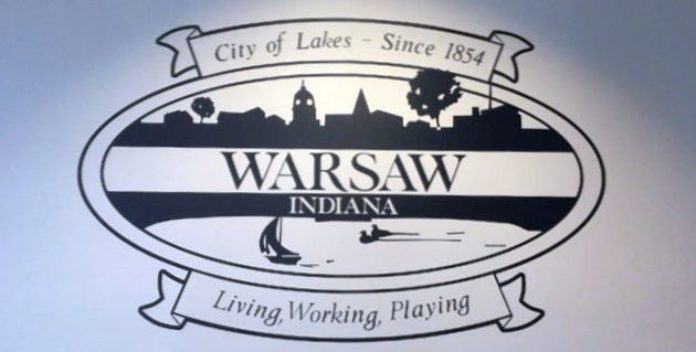Flooding at the intersection of East Market and Johnson streets is not a new problem.
The city has been trying to address it since at least the 1960s.
Friday, the Warsaw Board of Public Works and Safety approved an amendment to an agreement between the city and engineering firm AECOM Technical Services Inc., Indianapolis, for the East Market Street flood mitigation study. The amendment covers additional modeling, alternative evaluations and report finalization for a cost not to exceed $41,064 to give the city more options to consider in finding a solution for the decades-old problem.
Stormwater Utility Manager Brian Davison said there was a meeting a few weeks ago to look at where they were with the project.
“We wanted to do a little more modeling, look at some more alternatives for solutions in that area, and that’s what this amendment will allow us to do,” he told the board.
Mayor Joe Thallemer added, “What we received was a draft, and essentially the draft looked at what kind of flow are we getting in that area. We had to quantify what was getting into that area. Looking at that draft, we realized that we needed to – before we could finalize that report – we needed to look at the options to mitigate that flow.”
The key objective is to determine if a solution that maintains a 10-year 24-hour standard of protection to Paws & Claws & Co. is feasible and financially viable.
The additional work will look at five options to determine if they would achieve the desired standard of protection. Those options would include green infrastructure, parking lot excavation and/or storage, construction of an earth embankment around Paws & Claws, changing the profile of the intersection of East Market and Johnson streets and localized storm sewer upgrades.
If one of the five options is preferred, AECOM will prepare exhibits for the preferred option, prepare another draft of the report updated to include additional work, meet with city staff twice and present to key stakeholders, according to the exhibit provided.
Davison said most of the draft of the study had to do with modeling and flows. “The modeling appears to be very, very accurate when compared with actual rain being assessed to what happened compared to with what modeling says is happening. They’re very similar. It did not get much into the options to alleviate the situation, and that’s what we tried to get more into with this amendment, as much as possible, solutions to this problem.”
Thallemer said he’s been in contact with Paws & Claws owner Janet Zimmer about where the city is at with the problem and it’s spending another $41,000 to look at the specific solutions noted in the exhibit before finalizing the report. Zimmer was in attendance at Friday’s meeting but did not speak.
“Again, at this point, we’re at simply an early draft stage that needs to be completed and finalized, and we can’t do that without an amount not to exceed $41,064,” Thallemer said.
Once the report is finalized, then it will be available for everyone to see.
City Engineer James Emans said, “This intersection has been prone to flooding for decades. I’ve seen board minutes from the ’60s where our counterparts were trying to figure out ways to mitigate the flash floods that occur in that area.”
Emans said some of the initial findings in the study draft were that it would take “several million dollars with the way we approach the types of options we had. Recognizing that’s not cost feasible, we wanted to expand this out to what types of things we might do to mitigate some of the water. We were trying to mitigate to where that intersection would be a safe intersection to travel through with these massive flash floods we’ve been getting. We can’t do that. It’s a hole in the middle of a metropolitan area. So the next phase here is we’re looking at what kind of things we might be able to do to at least mitigate it and protect some of the property in the area. And that’s where we’re at.”
He said when the city did phase I of the East Market Street project, it “actually did improve the conveyance of water below grade as part of that project. But it’s so much water, it’s not enough.”
In talking with the street department, he said they’re going to change to directional grates in the Market Street project to grab water quicker.
“We’re trying everything we can to reduce the water that makes it to that intersection,” Emans said.
Right now, however, he said they don’t feel they have enough answers for the things the city might be able to do without spending millions of dollars.





